
Number 23 Squadron is a squadron of the Royal Air Force responsible for 'day-to-day space operations', having been reformed in January 2021, as the first "space squadron". Up until its disbandment in October 2009, it operated the Boeing Sentry AEW1 Airborne Warning And Control System (AWACS) aircraft from RAF Waddington, Lincolnshire.

No. 29 Squadron of the Royal Air Force was first raised as a unit of the Royal Flying Corps in 1915, and is one of the world's oldest fighter squadrons. The second British squadron to receive the Eurofighter Typhoon, it is currently the Operational Conversion Unit (OCU) for the Typhoon.

Number 25 (Fighter) Squadron is squadron of the Royal Air Force, having reformed on 8 September 2018.

Number 13 Squadron, also written as XIII Squadron, is a squadron of the Royal Air Force which operate the General Atomics MQ-9A Reaper unmanned aerial vehicle from RAF Waddington since reforming on 26 October 2012. The unit first formed as part of the Royal Flying Corps on 10 January 1915 and went on to fly the Martinsyde G.100, the Royal Aircraft Factory F.E.2, the SPAD VII and SPAD XIII, the Sopwith Dolphin during the First World War. In Second World War it started out operating the Westland Lysander for army cooperation. From late 1942 it used Blenheims in North Africa but in 1943 squadron converted to Ventura for coastal patrols and convoy escort duties. Post war it operated Mosquito before transitioning to the new jet aircraft Gloster Meteor and English Electric Canberra for photoreconnaissance. From 1 January 1990, it operated the Panavia Tornado, initially the GR1A at RAF Honington and later the GR4/4A at RAF Marham where it temporarily disbanded on 13 May 2011.
No. 515 Squadron RAF was a squadron of the Royal Air Force formed during the Second World War. It ushered in Electronic countermeasures (ECM) warfare, jamming enemy radar installations from October 1942 as the only such squadron in the RAF initially. Later in the war 515 Sqn was joined by other squadrons as part of No. 100 Group RAF. The squadron disbanded after VE day, when the need for such a specialised squadron had reduced.
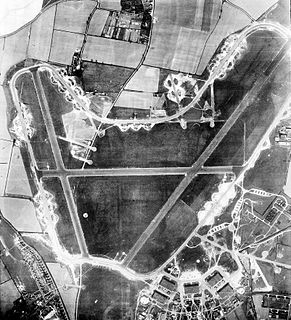
RAF Horsham St Faith is a former Royal Air Force station near Norwich, Norfolk, England which was operational from 1939 to 1963. It was then developed as Norwich International Airport.

No. 151 Squadron was a squadron of the Royal Air Force.

No. 257 Squadron RAF was a flying squadron of the Royal Air Force active during the First World War, the Second World War and also the Cold War. It was finally disbanded in December 1963.

No. 89 Squadron was a Royal Air Force squadron, mainly active in the fighter role during its existence.

No. 307 (Polish) Squadron, also known as No. 307 Squadron was one of several Polish squadrons in the Royal Air Force (RAF) during the Second World War. It was formed as part of an agreement between the Polish Government in Exile and the United Kingdom in 1940. It was the only Polish night fighter squadron in RAF service. No. 307 Squadron was named after the Polish city of Lwów, and was nicknamed "Eagle Owls".
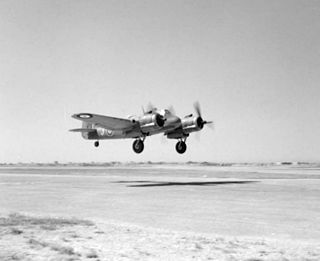
No. 235 Squadron RAF was an anti-submarine squadron of the Royal Air Force in World War I and in World War II served as a squadron in RAF Coastal Command.

No. 239 Squadron RAF was an anti-submarine squadron of the Royal Air Force during World War I. During World War II the squadron performed as an army co-operation squadron and later as a night intruder unit. After the war the squadron was disbanded.

No 605 Squadron was formed as an Auxiliary Air Force Squadron. Initially formed as a bomber unit, it was one of the most successful participants of the Battle of Britain. It also had the distinction of being active during the Second World War at two fronts at a time, when the squadron was split up between Malta and the Dutch East Indies. In its last incarnation as an active flying unit, the squadron served as the first jet fighter unit in the post-war Royal Auxiliary Air Force; 616 having already flown Gloster Meteors during the war. No. 605 Squadron was reformed as a RAuxAF Logistic Support Squadron (LSS) on 1 Nov 2014 within No. 85 Expeditionary Logistics Wing of the RAF A4 Force. On the 1 January 2019, the Reserve Logistic Support Wing (RLSW) was established with 501, 504 and 605 LSS Squadron's moving from No. 85 Wing RAF to form RLSW.
No. 109 Squadron RAF was an aircraft squadron of the Royal Air Force.
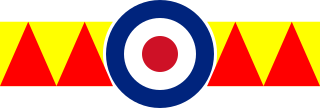
No. 604 Squadron RAF was a squadron of the Royal Air Force noted for its pioneering role the development of radar-controlled night-fighter operations. The squadron was established in March 1930 at RAF Hendon as a day-bomber squadron of the Royal Auxiliary Air Force. In July 1934, the squadron transitioned to two-seat fighters. Shortly after the commencement of World War II in 1939, the squadron was reassigned to a night-fighter role.
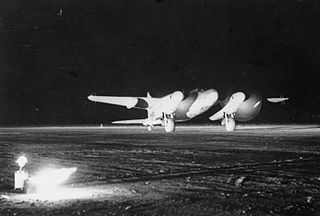
No. 256 Squadron RAF was a flying squadron of the Royal Air Force which operated during the First and Second World Wars. Initially equipped with Dh6 and Kangaroo aircraft, it operated Defiant Mk IIs, Beaufighters, and Mosquitoes in the Second World War.

No. 219 Squadron of the Royal Air Force was founded in 1918 and disbanded in 1957 after four separate periods of service. During the First World War it served as a coastal defence unit, and through most of the Second World War and the 1950s it operated as a night fighter air defence squadron. Three commanders of the squadron went on to be Chiefs of the Air Staff, two of the RAF and one of the Royal Pakistani Air Force.
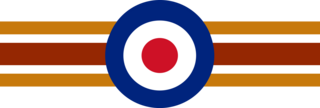
Number 125 (Newfoundland) Squadron was a Royal Air Force squadron active during World War II and briefly in the mid-1950s. Throughout its service the squadron primarily operated night fighters.
Ferry Squadron is a former Royal Air Force squadron which operated between 1956 and 1958 at RAF Benson, the squadron was formed by the replacements, disbandments and mergers dating back to 1943.



















